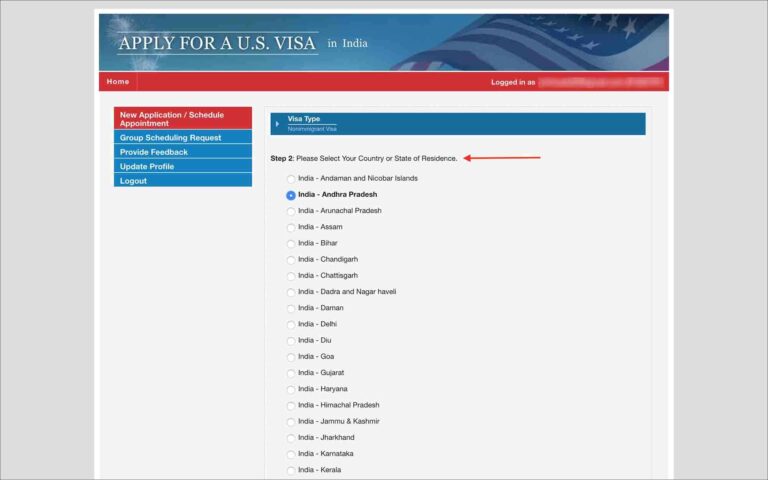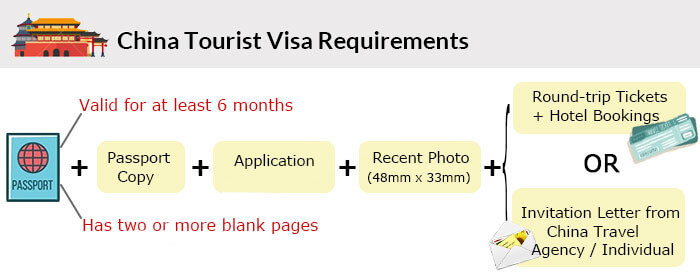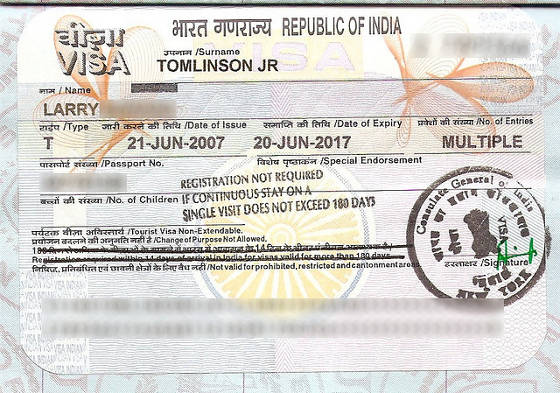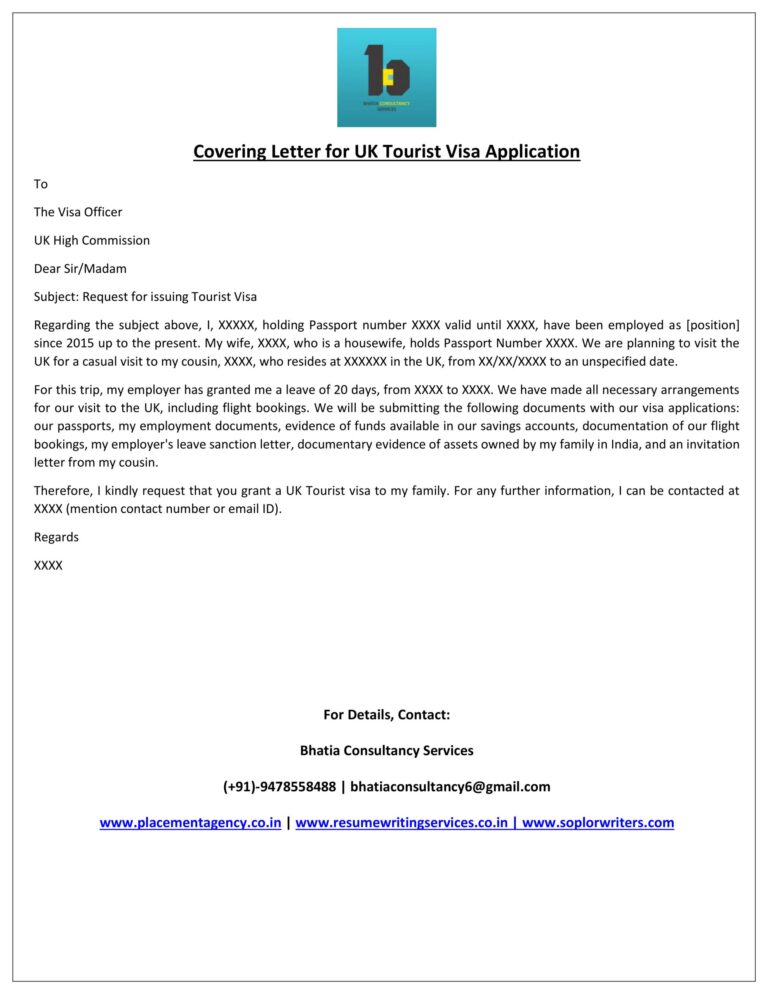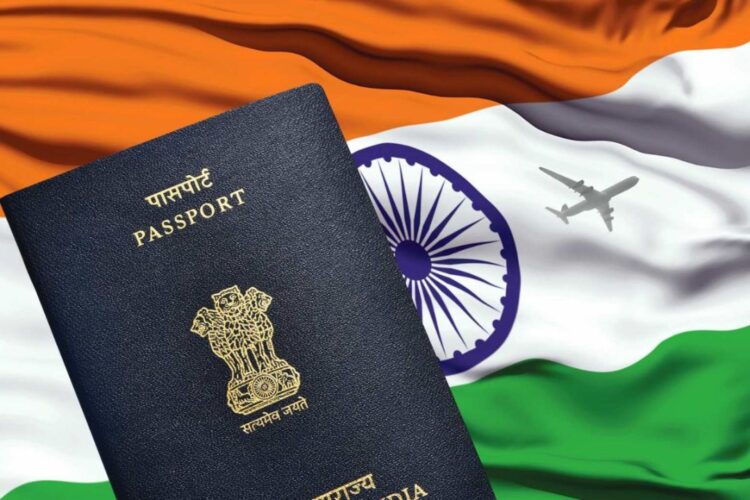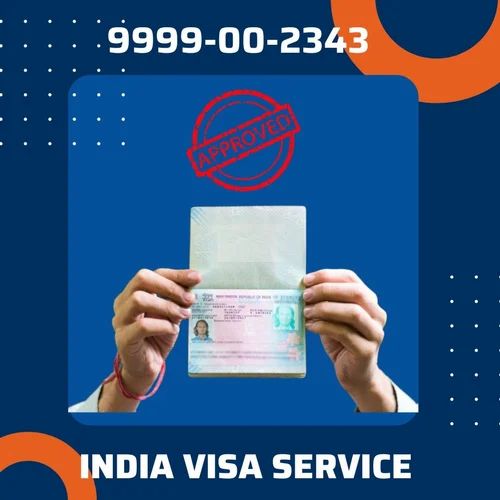Roam Freely: Mastering the Indian Tourist Visa Application
Understanding Indian Tourist Visas
Types of Indian Visas
When planning your travel to India, it’s important to understand the various types of visas available. The Government of India offers several visa categories tailored to different purposes such as tourism, business, medical treatment, and more (Consulate General of India, San Francisco). Here are the primary types of visas you might consider:
- E-Tourist Visa: For recreation, sightseeing, casual visits, or yoga programs.
- E-Business Visa: For business-related activities.
- E-Medical Visa: For medical treatment.
- E-Medical Attendant Visa: For accompanying an e-Medical Visa holder.
- E-Conference Visa: For attending conferences.
Each visa type caters to different travel needs and has specific requirements and eligibility criteria. For more detailed information, you can explore our article on types of Indian visas.
Visa Validity and Restrictions
The validity period of Indian visas varies based on the type of visa you are applying for. Here’s a quick overview:
| Visa Type | Validity Period | Entries Allowed |
|---|---|---|
| One Month E-Tourist Visa | 30 days | Double entry |
| One Year E-Tourist Visa | 365 days | Multiple entry |
| Five Years E-Tourist Visa | 5 years | Multiple entry |
| Regular Tourist Visa (U.S. Citizens) | 10 years | Multiple entry |
For U.S. citizens, the Indian visa is typically valid for 10 years for regular tourist visas. The e-Tourist Visa can be obtained with varying validity periods like one month, one year, or five years, all being multiple entry visas. However, the maximum stay in India during one calendar year should not exceed 180 days for the 1-year and 5-year Tourist Visa (Indian Visa Online).
It is crucial to keep in mind certain restrictions and regulations associated with Indian tourist visas:
- Holders of e-Visas must enter India only through designated airports and seaports. Check our guide on indian visa on arrival for more details.
- A valid passport and a visa or an Overseas Citizen of India (OCI) card are mandatory for entry and exit.
- If traveling from a yellow fever infected area, you must have a yellow fever vaccination certificate.
For a comprehensive list of requirements and to avoid any travel disruptions, visit our detailed guide on indian visa requirements.
Understanding the various types of Indian visas and their respective validity periods can significantly enhance your travel planning and ensure a smooth entry into India. Additional information regarding fees associated with these visas can be found in our article on indian visa fees.
Applying for an E-Visa
When planning your trip to India, obtaining the right visa is essential. The e-Visa is a convenient option for tourists. Here’s what you need to know about eligibility, the application process, and the fee structure.
Eligibility for E-Visa
The e-Visa for India is available to citizens of select countries, including the United States. It covers purposes such as recreation, sightseeing, casual visits, yoga programs, medical treatment, business, and attending conferences (Consulate General of India, San Francisco). To check if your country is eligible, visit our Indian visa requirements page.
Steps to Apply Online
Applying for an Indian e-Visa is a straightforward process. Here are the steps you need to follow:
- Visit the official Indian e-visa website.
- Fill out the online application form with your personal and travel information.
- Upload a recent passport-sized photograph and a copy of your passport’s bio page. Ensure they meet the Indian visa photo requirements.
- Select your visa type and duration: e-Tourist, e-Business, e-Medical, etc.
- Review your application to ensure all information is accurate.
- Pay the applicable visa fees (details below).
For further assistance, check out our guide on how to apply for Indian visa online.
Fee Structure and Payment
The fee structure for the e-Visa varies based on the type and duration. Below is a table outlining the costs for e-Tourist Visas:
| Visa Duration | Fee (USD) | Additional Charges |
|---|---|---|
| 30-day e-Tourist Visa (April-June) | 10.00 | Bank charges: 2.5% |
| 30-day e-Tourist Visa (July-March) | 25.00 | Bank charges: 2.5% |
| 1-year e-Tourist Visa | 40.00 | Bank charges: 2.5% |
| 5-year e-Tourist Visa | 80.00 | Bank charges: 2.5% |
Additional fees apply to different e-Visa categories such as e-Business, e-Medical, and e-Conference visas. Visit our Indian visa fees page for comprehensive details.
Payment for the e-Visa can be made using a credit or debit card. A confirmation email with an application ID is sent upon successful payment. Use this ID to track your visa application status.
Remember that the e-Visa is non-extendable and non-convertible, and biometric details will be captured upon arrival in India (Consulate General of India, San Francisco). For more information, explore our detailed guide on the Indian visa application process.
Always plan ahead and apply at least four days before your intended arrival in India to ensure a smooth application process (Consulate General of India, San Francisco). For additional assistance, refer to our Indian visa helpline.
Detailed Visa Categories
When applying for an Indian tourist visa, it’s important to understand the different types of Indian visas available. Each visa category serves a unique purpose, and knowing the specifics will help you select the most suitable option. Below are the main categories of e-visas for traveling to India.
E-Tourist Visa
The e-Tourist Visa is perhaps the most commonly sought after by travelers. This visa allows you to explore the wonders of India purely for tourism purposes. There are three variations, each offering different durations:
- 30 days: Suitable for short-term travel, including vacations and short visits.
- 1 year: Ideal for extended holidays or multiple short visits within a year.
- 5 years: Best for those who plan to revisit multiple times over a long period.
| Visa Duration | Validity | Maximum Stay per Visit | Number of Entries |
|---|---|---|---|
| 30 Days | 30 days | 30 days | Double |
| 1 Year | 1 year | 90 days | Multiple |
| 5 Years | 5 years | 90 days | Multiple |
Applications can be made a minimum of 4 days and up to 120 days in advance for 1-year and 5-year visas, and up to 30 days in advance for 30-day visas (Indian Visa Online).
E-Business Visa
For those intending to engage in business activities such as attending meetings, conferences, or trade fairs, the e-Business Visa is the appropriate choice. It is valid for 1 year, permitting multiple entries and a maximum stay of up to 180 days.
| Visa Type | Validity | Maximum Stay per Visit | Number of Entries |
|---|---|---|---|
| E-Business Visa | 1 year | 180 days | Multiple |
Find more information about business travel regulations in our article on the indian business visa.
E-Medical Visa
The e-Medical Visa is specifically designed for individuals who need to visit India for medical treatment. Valid for 60 days, this visa allows for triple entries to facilitate medical consultations, procedures, and follow-ups.
| Visa Type | Validity | Maximum Stay per Visit | Number of Entries |
|---|---|---|---|
| E-Medical Visa | 60 days | 60 days | Triple |
For a detailed understanding of the e-Medical Visa, consider reading our section on indian medical visa.
E-Medical Attendant Visa
If you are accompanying a patient traveling to India for medical treatment, the e-Medical Attendant Visa is the appropriate category. It has the same duration and entry options as the e-Medical Visa, ensuring you can stay with the patient throughout their treatment period.
| Visa Type | Validity | Maximum Stay per Visit | Number of Entries |
|---|---|---|---|
| E-Medical Attendant Visa | 60 days | 60 days | Triple |
This visa can be applied for by up to two attendants per patient holding an e-Medical Visa (Consulate General of India, San Francisco).
E-Conference Visa
If you are planning to attend a conference, seminar, or workshop in India, the e-Conference Visa is your best bet. This visa is valid for 30 days from the date of arrival in India and permits a single entry.
| Visa Type | Validity | Maximum Stay per Visit | Number of Entries |
|---|---|---|---|
| E-Conference Visa | 30 days | 30 days | Single |
Gain more insights into the application process for an e-Conference Visa by visiting indian conference visa.
Understanding these visa categories can significantly streamline your application process. For more information, visit our comprehensive guide on the indian visa application process.
Visa Application Process
Timeline for Application
When applying for an Indian tourist visa, it’s important to be aware of the timeline for the application process. The processing of the visa can take up to 5 business days (or longer in certain cases) from the receipt of the application at the Consulate, subject to complete submission of all required documents (Consulate General of India, San Francisco).
Applicants for e-Tourist and e-Business visas must apply online at least 4 days in advance of the date of arrival in India. For e-Medical, e-Medical Attendant, and e-Conference visas, applicants can apply online 4 days to 120 days in advance (Consulate General of India, San Francisco).
| Visa Type | Minimum Days in Advance | Maximum Days in Advance |
|---|---|---|
| e-Tourist Visa | 4 Days | 120 Days |
| e-Business Visa | 4 Days | 120 Days |
| e-Medical Visa | 4 Days | 120 Days |
| e-Medical Attendant | 4 Days | 120 Days |
| e-Conference Visa | 4 Days | 120 Days |
Biometric Data Collection
As part of the Indian visa application process, biometric data collection is an important step to ensure the security and identity verification of applicants. All applicants must provide biometric details, which include fingerprints and digital photographs. This data is typically collected at visa application centers or consulate offices.
The collection of this data aids in the validation of your identity and synchronizes your records with the authorized Indian immigration systems. It’s crucial to provide accurate and truthful information during this process to avoid potential delays or issues with your visa application.
Visa Extension and Conversion
There might be situations where you need to extend your stay beyond the allowed duration or convert your visa type. For extensions, it is important to note the following:
-
Visa Extension: Extensions for Indian tourist visas are rare and are subject to approval by the Foreigner Regional Registration Office (FRRO) or the Foreigner Registration Office (FRO). It is advised to apply for an extension well in advance of your visa’s expiration if you foresee needing additional time.
-
Visa Conversion: If your purpose of visit changes while you are in India (for instance, from tourism to business), you may need to convert your visa type. Conversion requests are also handled by the FRRO or FRO and are granted only on a case-by-case basis. Necessary documentation supporting the reason for conversion must be provided during the application.
Visitors are required to register with the FRRO or FRO concerned within two weeks after their allowable stay of 180 days expires. Failure to comply with this regulation can result in legal consequences or fines.
Being well-informed and compliant with these processes ensures a hassle-free experience during your travel to India. For more details on the indian visa application process, including necessary documents and specific visa category regulations, visiting the official guidelines and resources can provide further clarity.
Important Visa Regulations
Understanding the key visa regulations is vital for ensuring a smooth experience when traveling to India. This section covers essential topics such as FRRO registration, prohibited items and actions, and the legal consequences of violations.
FRRO Registration
Certain categories of travelers, including those visiting India to study, work, or stay for more than 180 days, are required to register with the Foreigners Regional Registration Office (FRRO). Registration must be completed within 14 days of your arrival in India. Failure to register can result in fines, fees, and other penalties (Travel.State.Gov).
| Category | Registration Requirement |
|---|---|
| Study | Required |
| Work | Required |
| Stay over 180 days | Required |
For more information on the FRRO registration process, check our guide on indian visa requirements.
Prohibited Items and Actions
Compliance with Indian customs regulations is crucial. Possession of certain items can lead to severe penalties, including detention or arrest. Key prohibited items and actions include (Travel.State.Gov):
- Satellite Phones: Carrying a satellite phone is strictly prohibited in India.
- Illegal Drugs: Possession of any illegal substances is punishable under Indian law.
- Loose Ammunition: Carrying loose ammunition in your luggage can result in fines or arrest.
Legal Consequences of Violations
Violating Indian visa regulations or customs laws can have serious legal consequences. U.S. citizens have been arrested and prosecuted for transporting prohibited items or possessing satellite phones in India (Travel.State.Gov).
Key Consequences:
- Arrest and Detention: Possession of prohibited items can lead to immediate arrest and detention.
- Fines: Violations can result in hefty fines and legal fees.
- Deportation: Severe violations can lead to deportation, impacting future travel plans.
It’s essential to adhere strictly to visa and customs regulations. For more details on handling legal matters while in India, refer to our section on seeking assistance for legal matters.
By understanding and following these visa regulations, you can ensure a hassle-free and enjoyable visit to India. For more detailed information on the visa application process, visit our article on indian visa application process.
Ensuring a Smooth Travel Experience
Safety and Security Guidelines
When traveling to India, ensuring your safety is paramount. Adhering to these guidelines can help you navigate the country safely:
- Customs Regulations: Avoid transporting prohibited items, including satellite phones. Violating customs regulations can result in arrest, fines, or even deportation (Travel.State.Gov).
- Local Laws: Familiarize yourself with local laws, especially those pertaining to public behavior and narcotics. Penalties can be severe.
- Personal Safety: Stay in well-lit, populated areas. Avoid traveling alone at night, and always be aware of your surroundings.
- Secure Your Belongings: Use hotel safes to store valuables. Be cautious with your passport and important documents.
Refer to our article on types of Indian visas to understand the different travel permissions.
Contacting Authorities in Need
Knowing how to reach local authorities is crucial. Here’s a guide:
- Local Police: In case of an emergency, you can dial 100 for police assistance. It is vital to report any crime immediately.
- U.S. Embassy or Consulate: If you are a U.S. citizen, contact the U.S. Embassy or Consulate for support and guidance. They can provide assistance in legal matters, help liaise with local authorities, and offer emergency services.
For detailed steps on the Indian visa application process, visit our guide.
Seeking Assistance for Legal Matters
If you find yourself in a legal bind, follow these steps:
- Contact Your Embassy: Your home country’s embassy can provide legal assistance and recommend local attorneys.
- Know Your Rights: Familiarize yourself with your rights under Indian law. Consulates can offer counsel on what to expect in legal proceedings.
- Compensation and Support: In the unfortunate event of a crime, inform local police and the embassy. Victims of crime, including sexual assault, can access compensation for counseling and other support services, such as relocation.
Ensure you regularly check the Indian visa requirements and relevant legal information to stay updated on any changes.
By adhering to these safety tips and making use of available resources, you can ensure a secure and enjoyable experience while traveling with your Indian tourist visa.

